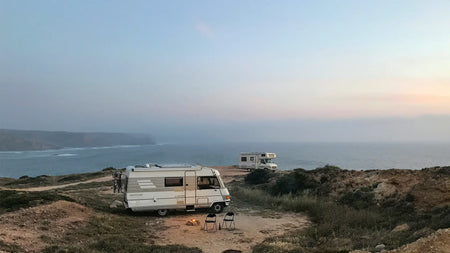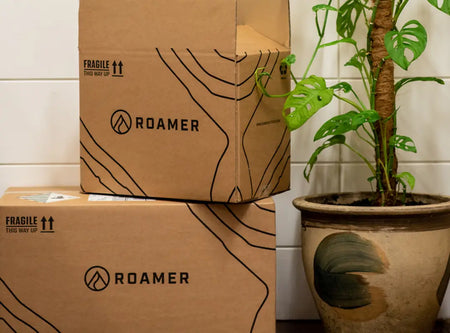
A battery for life
If you are not using your battery for a while then there’s a few steps you need to take in order to prolong the life of your battery.
LiFePO4 cells can be permanently damaged if the cell voltage is allowed to drop below 2.0V per cell but it’s more than just preventing it from running it flat – you should also be careful not to continuously over-charge the battery or to store at excessively high temperatures. All of these things will accelerate the aging of the cells and shorten its useful life.
It's important to note that the State of Charge reading on the Roamer app is a calculated value and while it is a good indication, it is possible for it to be completely wrong especially if the battery has not been cycled or calibrated recently. You should therefore use Voltage as a guide to storage, not the calculated State of Charge value. Please refer to the full Voltage chart in the User Manual for more information.


Longevity
Cell damage will occur if voltage is allowed to drop below 2.0V per cell (8V total on a 12V battery). The BMS will cut off discharging when it reaches 2.5V per cell but if the battery is left in this fully discharged state for an extended period, the voltage will continue to fall. You should therefore check your Roamer app regularly (or use a multimeter on the terminals) and if it drops below 3.2V per cell you should charge it soon (12.9V on a 12V LiFePO4 battery equates to about 20% state of charge).
While charging the battery fully does not damage the cells, continuously charging the battery at a high voltage will cause the battery cells to age faster and will reduce the useable capacity of your battery. This aging effect is amplified if the battery is also stored at high temperatures. For this reason we do not recommend trickle charging the battery while in storage, or leaving on float charging mode for long periods. LiFePO4 batteries only lose around 5% state of charge per month (and even less when in sleep mode) so it’s not necessary to do this anyway.
Best practise for storage
We recommend charging the battery to a resting voltage of between 3.25V and 3.32V per cell (13.0V and 13.28V on a 12V battery – around 40% to 80% state of charge), then isolating the battery via an external battery isolator switch. If using a Roamer SMART4 battery or HOME battery you should also use the switch on the case to turn off the BMS and put it into low power sleep mode. If you have solar panels connected then you will also need to isolate the solar at the same time (most solar controllers should not be connected to solar without a battery). If you need to leave the battery connected for any reason (for example if it is powering a GPS tracker) then you should set your solar/mains charger to a storage voltage of 13.2V (or change the bulk/absorption/float voltage to 13.2V if your charger doesn’t have a storage mode. This will maintain the battery at around 50% state of charge while still delivering power to your essential loads.
Ideally the battery would be kept in a dry location with a stable temperature. While cold temperatures are generally ok for storage (even down to minus 20°C is ok), you should avoid very warm temperatures (above 40°C).
What to do if your battery runs flat?
If you find your battery has fully discharged, first of all don’t panic. LiFePO4 batteries are a lot more resilient than lead-acid batteries and chances are you won’t have done any noticeable damage to your battery. You should of course charge the battery as soon as possible to prevent it getting worse however.
If your battery BMS is in low voltage protection mode then the voltage at the terminals will only show around 1-2V, this is normal and is not an indication of the cell voltages which can be checked using the Bluetooth app. Where this can be a problem however, is if you are using lead-acid chargers which only work when they can detect a voltage at the charger terminals. In this case, you may not be able to charge the battery at all. If this happens to you, you will need to find a compatible LiFePO4 charger or power supply, or connect in parallel with another battery of the same nominal voltage.
If using a SMART4 battery, you can also use the Emergency mode feature on the Roamer SMART app to temporarily remove the protection mode, allowing you to charge normally.
If your battery cells have dropped so low that the Bluetooth app doesn’t even work (usually around 2.0V per cell) then it may require a physical recovery – this involves opening the case and charging the cells directly, bypassing the BMS. This process should not be attempted without speaking to Roamer, opening the case without authorisation will invalidate the warranty.
Tips for storage
We have provided some tips below to increase longevity of your battery when storing.
KNOWLEDGE BASE
Search our comprehensive Knowledge Base
We have a wide range of articles to support you with your battery install. Our articles provide information on battery installation, maintenance and aftercare.


Still need help?
If you can’t find the information you need, contact us via phone, chat or email.
REQUEST TECH SUPPORT CALLBACK






